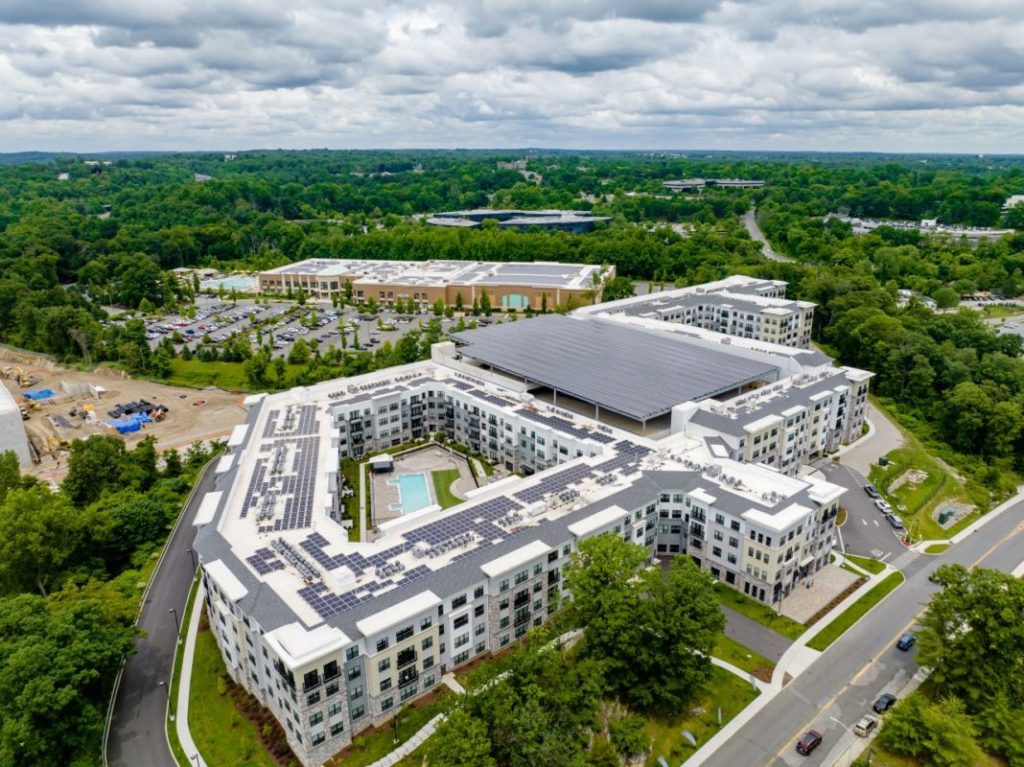
Appetite to invest in US community solar projects has seen increased interest since last year, boosted by the Inflation Reduction Act.
A key boosting effect for increased investment in solar in general last year was the release of guidance on tax credits from the US Department of Treasury and Internal Revenue Service (IRS), which included both the Investment Tax Credit (ITC) and Production Tax Credit (PTC).
Unlock unlimited access for 12 whole months of distinctive global analysis
Photovoltaics International is now included.
- Regular insight and analysis of the industry’s biggest developments
- In-depth interviews with the industry’s leading figures
- Unlimited digital access to the PV Tech Power journal catalogue
- Unlimited digital access to the Photovoltaics International journal catalogue
- Access to more than 1,000 technical papers
- Discounts on Solar Media’s portfolio of events, in-person and virtual
“There’s a lot of investment appetite,” says Bruce Stewart, CEO at Perch Energy, a community solar service provider present in several states in the US and with over 500MW under management.
“We’re seeing growth and investment from our client partners who have billions of dollars ready to invest in solar. And so they’re looking at community solar as another way to bring more projects online, because they connect to the distribution grid, as opposed to the transmission grid,” adds Stewart.
The ability for community solar projects to connect to the distribution grid, as well as these projects being smaller than utility-scale solar projects, are two major contributors to the increased interest, explains Stewart.
These smaller community solar projects were also able to take advantage of the tax credit transferability market to finance their projects, as shown in a report from Crux, an ecosystem for entities to transact and manage transferable tax credits. The report highlights how last year between US$7 and US$9 billion in transferable tax credit transactions in clean energy were made.
A key element from the report was that over 80% of the transferable transactions in Crux’s dataset were for US$50 million or less.
“A lot of that was community solar. So smaller solar deals, that is like a category that if you think about the historical tax equity market, what historically has happened with community solar assets is that you have these upstream developers that are buying the assets, aggregating them into portfolios and then securing tax equity.
“What this shows is that the transfer market allows for those kinds of smaller deals to go directly to market and sell. It just opens up the tax attribute market to smaller developers in a way that it was never opened before,” explains Alfred Johnson, CEO at Crux.
Although the pricing might be lesser on a per credit basis, they are still able to monetise in highs of 80s and 90 cents on the dollar, adds Johnson.
With more investment accessible towards community solar projects, another key aspect for the appetite to grow is the fact that more states are continuing to implement programmes for community solar.
“More and more states are continuing to consider the expansion of programmes or the establishment of permanent programmes. But also, ultimately, the opening of new programmes as well. So all of those things are definitely part and parcel for why I think there’s a motivation and why the dollars are, in fact, there,” says Stewart.
Billing confusion for LMI consumers
With investment appetite ever growing in community solar – a market that is poised to more than double in the coming years – some challenges still present themselves. One of these is the continued issues projects face in obtaining interconnection access and with projects being delayed, especially in Maine, says Stewart.
Another challenge is that, despite having several states implementing thresholds in their programmes allocated towards low-to-moderate income (LMI) consumers – as was the case last year in Minnesota with a 30% of project capacity to be allocated to LMI customers – there are still some barriers in terms of billing.
“Many of the markets still have a dual bill concept in which the credits would be billed by the servicer like us and they would also get a bill from the utility,” explains Stewart.
As more states are working to implement new programmes or revamp existing ones, Stewart says it would be easier for LMI customers to have a one-bill solution from the utility, called utility consolidated billing (UCB) as opposed to the dual utility billing.
“That can be a barrier to customers who [used to] have one utility bill and now need to get accustomed to potentially paying two utility bills on a dual bill market. There are solutions for that, where you can do a one-bill solution,” says Stewart, adding that all the process would be done through the utility.
Raising awareness on the billing process is one of the key aspects to let LMI consumers know about community solar, the other is in letting them know that programmes in their states are available for them to apply for it.
“Everybody would love to pay a lower electricity bill, that’s pretty simple. For many low-to-medium income families, that’s a really important part of saving on their home budget. As dollars are quite closely managed.”
Among the tools working to solve this issue is, the US Department of Energy (DOE) and the National Renewable Energy Laboratory (NREL) – among others – are creating a Connector for recipients of the Low Income Home Energy Assistance Program (LIHEAP) which would make it easier for them to know how they can participate in community solar and other energy savings tools available near them.
A further piece on community solar will be published in the coming weeks regarding the failure of a recent bill in Washington and how utilities have been challenging the implementation of community solar programmes in new states.






